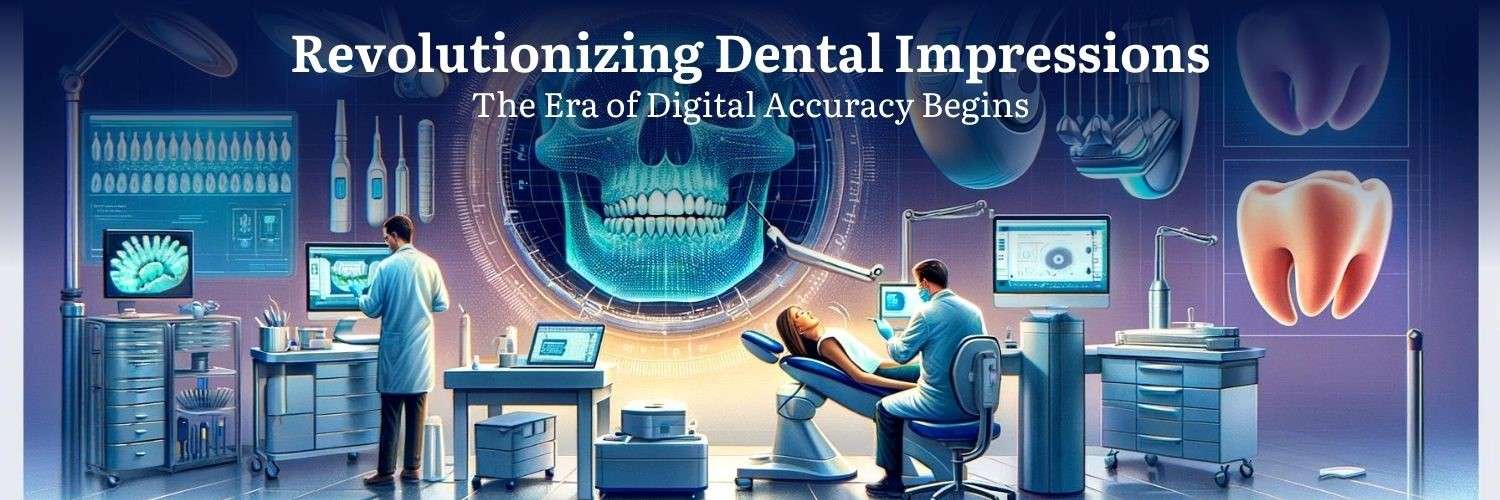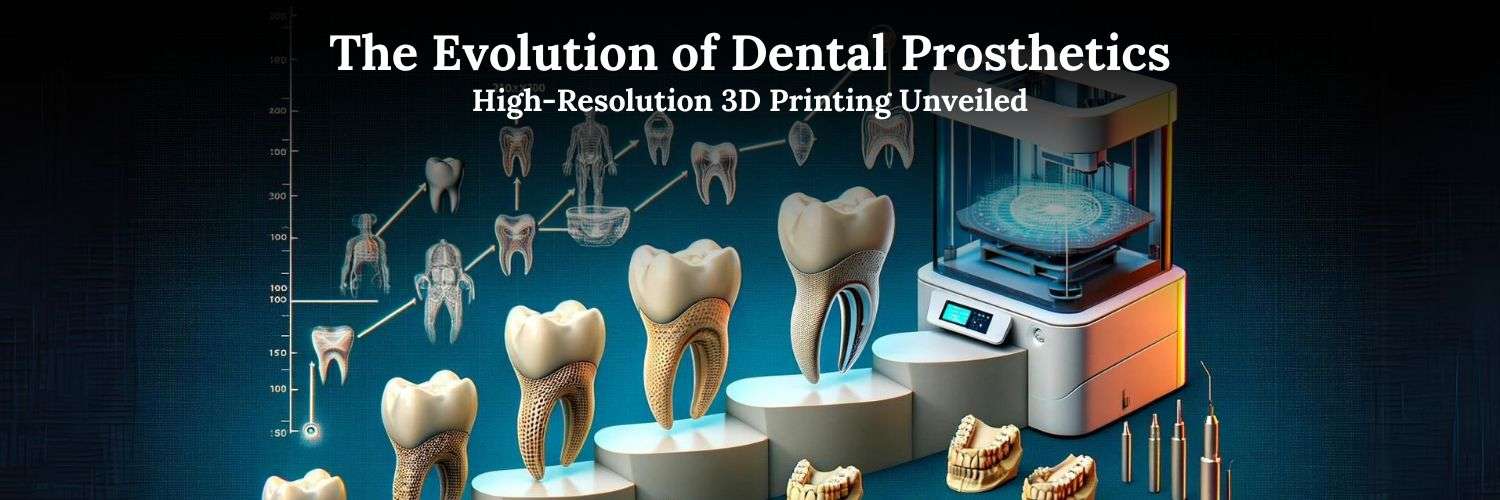Revolutionizing Dental Impressions: The Era of Digital Accuracy Begins
The journey of dental impressions has been a long and evolving path, from the early days of alginate and plaster to the sophisticated digital solutions of today. Traditional dental impression techniques, while foundational in the history of dentistry, have presented challenges both for the dental professional and the patient. These methods, often described as cumbersome and uncomfortable, involved the physical molding of the patient’s teeth using various materials that would then set to form an impression. Although effective for many years, this approach was not without its drawbacks, including potential inaccuracies due to material shrinkage or expansion, discomfort for patients, and a time-consuming process for both preparation and analysis.
The advent of intraoral scanning technology marks a significant shift towards digital accuracy in dental impressions. This revolutionary approach has transformed the landscape of dental diagnostics and treatment planning, introducing a level of precision and patient comfort previously unattainable. Intraoral scanners employ advanced optical technology to capture highly detailed 3D images of a patient’s dental anatomy, eliminating the need for physical molds. This transition to digital dental impressions signifies more than just an improvement in efficiency; it represents the beginning of a new era in dentistry where digital orthodontics solutions and precision dental imaging converge to enhance patient care.
As we delve deeper into the capabilities and advantages of intraoral scanning technology, it becomes clear that this innovation is not merely a new tool in the dentist’s arsenal. It is a paradigm shift in how dental professionals approach the task of capturing dental anatomy, offering a glimpse into the future of dentistry—a future where digital accuracy and non-invasive procedures set a new standard for excellence in dental care.

The Rise of Intraoral Scanners in Modern Dentistry
Intraoral scanners represent a significant leap forward in the field of dentistry, marking a departure from traditional dental impression techniques that often required the use of alginate or silicone-based materials. These traditional methods, while effective, could be uncomfortable for patients, time-consuming, and sometimes less precise. The introduction of intraoral scanning technology has revolutionized this aspect of dental care, offering a seamless, accurate, and patient-friendly alternative.
An intraoral scanner is a compact, hand-held device that captures high-resolution, 3D images of the interior of a patient’s mouth. This digital tool quickly scans the teeth and gums, creating a virtual model of the mouth that can be used for various diagnostic and treatment planning purposes, including the fabrication of dental restorations, orthodontic solutions, and more. The accuracy and efficiency of intraoral scanners stem from their ability to produce immediate digital dental impressions, which can be easily shared with laboratories or used in conjunction with CAD/CAM (Computer-Aided Design/Computer-Aided Manufacturing) technology for on-site restoration creation.
Key features that set intraoral scanning technology apart include:
– Non-Invasive Dental Scanning: Unlike traditional impression methods that can cause discomfort or gagging, intraoral scanners are non-invasive. The device simply hovers over the teeth, making the process much more comfortable for patients.
– Precision Dental Imaging: Intraoral scanners offer unparalleled accuracy in dental imaging. They capture detailed 3D images that enhance the quality of dental care, from diagnosis to treatment.
– Efficiency and Speed: The digital impressions are available almost instantaneously, significantly reducing the waiting time for both patients and practitioners. This efficiency streamlines the treatment process, allowing for quicker turnaround times for dental appliances.
– Digital Orthodontics Solutions: Intraoral scanners are integral to digital orthodontics, enabling the design and manufacture of aligners and other orthodontic appliances with exacting precision.
The adoption of intraoral scanners in modern dentistry not only enhances patient comfort and satisfaction but also elevates the standard of care through improved accuracy and efficiency. As such, intraoral scanning technology has become a cornerstone of digital dentistry, setting a new benchmark for dental impressions and paving the way for further innovations in the field.


Advantages of Digital Dental Impressions
The advent of digital dental impressions has marked a significant leap forward in the field of dentistry, offering advantages that vastly improve both the patient experience and the clinical outcomes. Compared to traditional impression methods, which often involve the use of physical molds that can be uncomfortable and less precise, digital dental impressions stand out for their accuracy, patient comfort, efficiency, and seamless integration with digital orthodontics solutions.
Enhanced Accuracy and Precision
Digital dental impressions are renowned for their exceptional accuracy and precision. Utilizing advanced intraoral scanning technology, these digital systems capture detailed 3D images of a patient’s oral anatomy. This precision is crucial for creating dental restorations, orthodontic devices, and other treatments that fit flawlessly, reducing the need for adjustments and remakes.
One standout example of this technology is the 3Shape Trios 4, an intraoral scanner that sets a high standard for accuracy in digital dentistry. The Trios 4 utilizes cutting-edge CAD/CAM scanning technology to produce highly accurate and detailed 3D images, ensuring that dental restorations and devices are designed and fabricated with unparalleled precision.
Improved Patient Comfort
Digital dental impressions significantly enhance patient comfort by eliminating the need for traditional impression materials, which can be unpleasant and sometimes trigger gag reflexes. The non-invasive nature of intraoral scanners like the 3Shape Trios 4 allows for a more comfortable and stress-free experience for patients, making dental visits more pleasant and reducing anxiety associated with dental procedures.
Efficiency and Streamlined Workflow
The use of digital dental impressions greatly improves the efficiency of dental workflows. Intraoral scanners enable immediate data capture and processing, allowing for faster diagnosis and treatment planning. The digital data can be easily shared with labs or used in-house for creating restorations using CAD/CAM technology, significantly speeding up the overall treatment process.
Moreover, the 3Shape Trios 4 enhances workflow efficiency by integrating directly with digital orthodontics solutions and other digital dentistry tools. This integration facilitates seamless communication between dental professionals and laboratories, further optimizing the treatment planning and fabrication process.
Case Studies and Data
Case studies and clinical data have consistently demonstrated the superiority of digital dental impressions in terms of diagnostic accuracy and treatment effectiveness. For instance, practices utilizing the 3Shape Trios 4 have reported reductions in fitting issues and adjustments for restorations, translating to higher patient satisfaction and fewer follow-up visits.

Exploring the Technology Behind Intraoral Scanners
Intraoral scanners represent a pinnacle of innovation in digital dentistry, driven by sophisticated technology that enables precise, non-invasive dental imaging and diagnostics. At the heart of these devices is Computer-Aided Design/Computer-Aided Manufacturing (CAD/CAM) scanning technology, a cornerstone that allows dental professionals to create accurate digital impressions of patients’ oral cavities.
CAD/CAM Scanning Technology
CAD/CAM technology in intraoral scanners works by capturing thousands of high-resolution digital images of the oral cavity using a handheld scanning device. These images are then stitched together using advanced software to create a three-dimensional model of the mouth. This process not only eliminates the discomfort associated with traditional impression materials but also significantly enhances the accuracy of dental measurements and fittings.
The scanners use a combination of laser or structured light to map the intricate details of the teeth and gums with remarkable precision. This digital mapping ensures that the resulting images and models are exact replicas of the patient’s oral anatomy, allowing for the creation of dental restorations and appliances that fit with unprecedented accuracy.
Enhancing Digital Dentistry Tools
The integration of CAD/CAM technology with intraoral scanners has been a game-changer for digital dentistry. This technology streamlines the diagnostic and treatment planning process, enabling dental professionals to view detailed 3D images immediately. Such capabilities allow for more accurate diagnoses, improved treatment planning, and the ability to foresee potential issues before they become problematic.
Moreover, the software that powers these scanners is continually evolving, incorporating artificial intelligence and machine learning to improve image capture and analysis further. This ongoing development ensures that intraoral scanners remain at the forefront of non-invasive, precise dental imaging, contributing significantly to the advancement of digital dentistry.
Intraoral Scanners and Patient Experience
The introduction of intraoral scanners into dental practices has significantly enhanced the patient experience, particularly in terms of comfort and satisfaction. This technology aligns perfectly with the preferences of younger generations, like Gen Z and Millennials, who prioritize non-invasive medical procedures and value technological advancements in healthcare.
Enhanced Comfort
The use of intraoral scanners for digital dental impressions eliminates the need for traditional impression materials, which can be uncomfortable, messy, and sometimes cause gagging. The non-invasive nature of digital scanning allows for a much more pleasant experience, as the compact, handheld devices gently glide over the dental surfaces, capturing detailed images without physical discomfort. This approach is especially advantageous for patients with dental anxiety or a sensitive gag reflex, as it minimizes stress and discomfort during the impression process.
Improved Satisfaction
Digital impressions contribute significantly to patient satisfaction by reducing the overall time spent in the dental chair. The efficiency of intraoral scanners not only shortens the duration of appointments but also increases the predictability of treatment outcomes. This efficiency, combined with the high accuracy of digital impressions, often results in fewer follow-up appointments for adjustments, directly enhancing the patient experience.
Moreover, younger patients, who are digital natives, appreciate the integration of advanced technology into their dental care. Seeing their dental impressions rendered in real-time on a screen can be an engaging and reassuring process, fostering a sense of involvement in their treatment planning.

The Future of Dental Impressions and Digital Dentistry
The trajectory of intraoral scanning technology suggests a future where digital dentistry not only refines current practices but also opens the door to unprecedented innovations. As this technology continues to evolve, we can anticipate even greater strides in precision, efficiency, and overall patient care.
Future iterations of intraoral scanners are likely to be even more compact, faster, and more accurate, reducing the time for dental appointments and enhancing the comfort for patients. Integration with augmented reality (AR) could provide real-time, 3D visualizations of dental issues and treatment outcomes, empowering patients and practitioners with better decision-making tools.
Artificial intelligence (AI) and machine learning are expected to play pivotal roles in the evolution of digital dentistry. These technologies can enhance diagnostic accuracy by identifying patterns and anomalies in dental scans that might be missed by the human eye. AI could also automate certain aspects of dental design and treatment planning, significantly speeding up the process while maintaining high accuracy levels.
Moreover, the integration of intraoral scanning data with digital treatment platforms will streamline the treatment process, from diagnosis to the creation of personalized dental appliances and restorations. This seamless integration will not only improve clinical outcomes but also create a more engaging and informative experience for patients.
In essence, the future of dental impressions and digital dentistry holds the promise of a more precise, efficient, and patient-centered approach to dental care, leveraging the latest in technology to advance the practice of dentistry.
Conclusion: Embracing the Digital Transformation in Dentistry
The integration of intraoral scanners and digital dental impressions into dental practices represents a monumental shift in how dental care is delivered and experienced. This digital transformation has not only streamlined dental procedures but also significantly enhanced the accuracy of dental work, improved patient comfort, and revolutionized the approach to dental diagnostics and treatment planning.
The advent of intraoral scanning technology marks the beginning of an era where precision and efficiency in dental care are paramount. These advancements have led to a more patient-centric approach, reducing anxiety and discomfort associated with traditional dental impressions. For dental professionals, the transition to digital dentistry tools offers an opportunity to refine their practice, ensuring higher quality outcomes and patient satisfaction.
As we look to the future, it’s clear that the potential for further innovations in digital dentistry is vast. Dental professionals across all generations are encouraged to embrace these technologies, recognizing their critical role in staying competitive in a rapidly evolving field. Adopting digital dental impressions and intraoral scanners is not just about keeping pace with technological advancements; it’s about committing to providing the highest standard of care.





Leave a comment